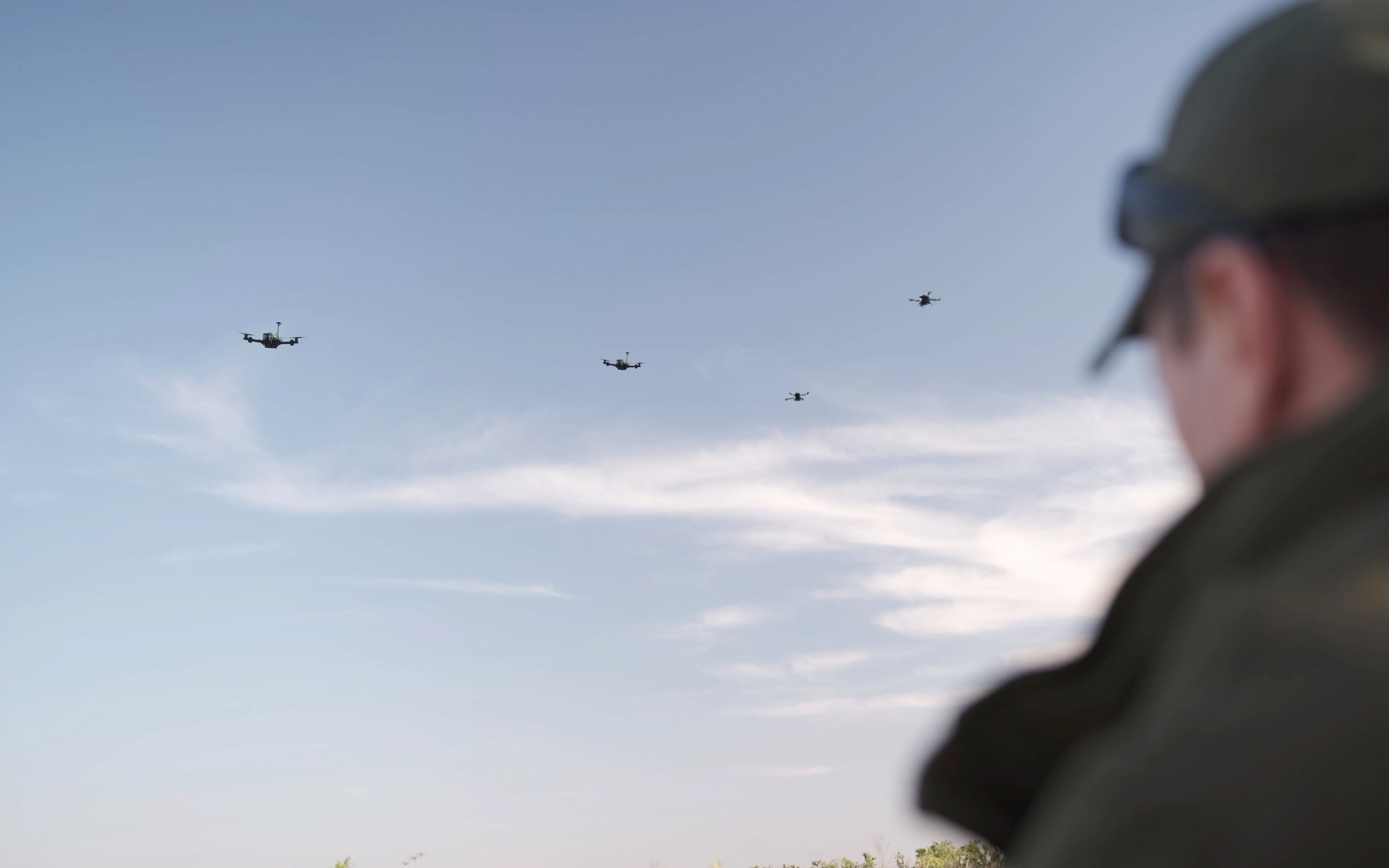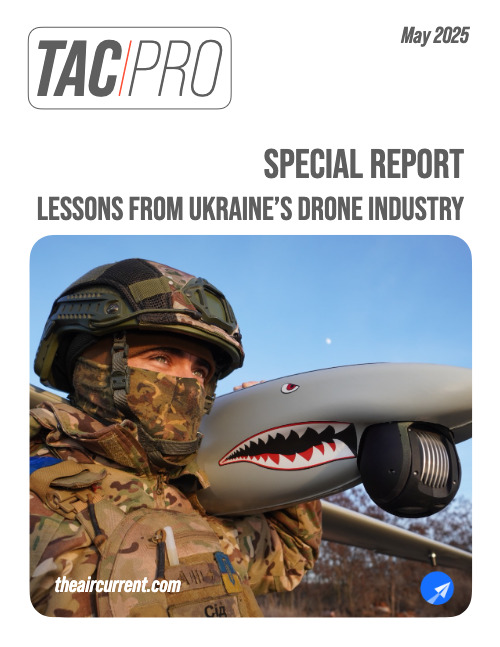This company profile is a part of The Air Current’s Special Report on the Ukrainian drone industry, which is available here.
Prior to Russia’s full-scale invasion of Ukraine, Swarmer CEO Serhii Kupriienko was working for Amazon in Ukraine leading the artificial intelligence department of its Ring division, maker of smart doorbells and other home security devices. But after Ukraine mobilized for war, he and a colleague decided to direct their talents toward creating a distributed operating system for robots — what Kupriienko described as “Skynet with ethical principles in place.”
Swarmer’s immediate focus is on allowing human operators to control multiple drones simultaneously, thereby maximizing the impact of Ukraine’s limited manpower. To do this, it is developing a software layer that allows the drones to synchronize and coordinate with each other without direct human interaction. “We approach it in a way where you don’t micromanage every single drone,” he said. “You just set the goals, you plan the operation … and let them coordinate and execute by themselves.”
Rather than developing the drones itself, Swarmer is focused on just the software component, working with different hardware developers to integrate its solution. The company also leverages outside suppliers for electronic warfare (EW)-resistance communications, GNSS-denied navigation and automated terminal guidance solutions, “because different solutions fit better for different customers in different applications,” Kupriienko said. “We keep laser-focused on the AI for collaboration autonomy.”

The process of customizing its solution for each platform can take anywhere from a few weeks to a few months, depending on the type of drone and its mission set. “The AI for a particular drone is built especially for that particular drone, so it keeps in mind the capabilities and the limitations and constraints of this kind of drone,” he said.
There are several ways in which an operator might use Swarmer’s technology. A group of drones might be launched to suppress an incoming assault, with the operator selecting on a video screen which targets they should engage. Or, if the operator feels confident that there will be no friendly forces or civilians in a given area, they can define a “kill box” on a map, and the drones can autonomously select targets within that defined area. (Kupriienko noted that friend or foe identification is a “core problem” of any military engagement, whether or not drones are involved.)
Kupriienko acknowledged that the stakes involved with swarming drones drive the need for greater reliability and transparency than some other incarnations of AI, and that military personnel have valid concerns about whether they can trust the technology.
“People are afraid of AI, and this is one of the key reasons why we built it in a way that it’s clear,” he said. “When you’re a human operator, you understand what’s happening right now and what will happen next.”
Write to Elan Head at elan@theaircurrent.com
Subscribe to Continue Reading
Our award-winning aerospace reporting combines the highest standards of journalism with the level of technical detail and rigor expected by a sophisticated industry audience.
- Exclusive reporting and analysis on the strategy and technology of flying
- Full access to our archive of industry intelligence
- We respect your time; everything we publish earns your attention


